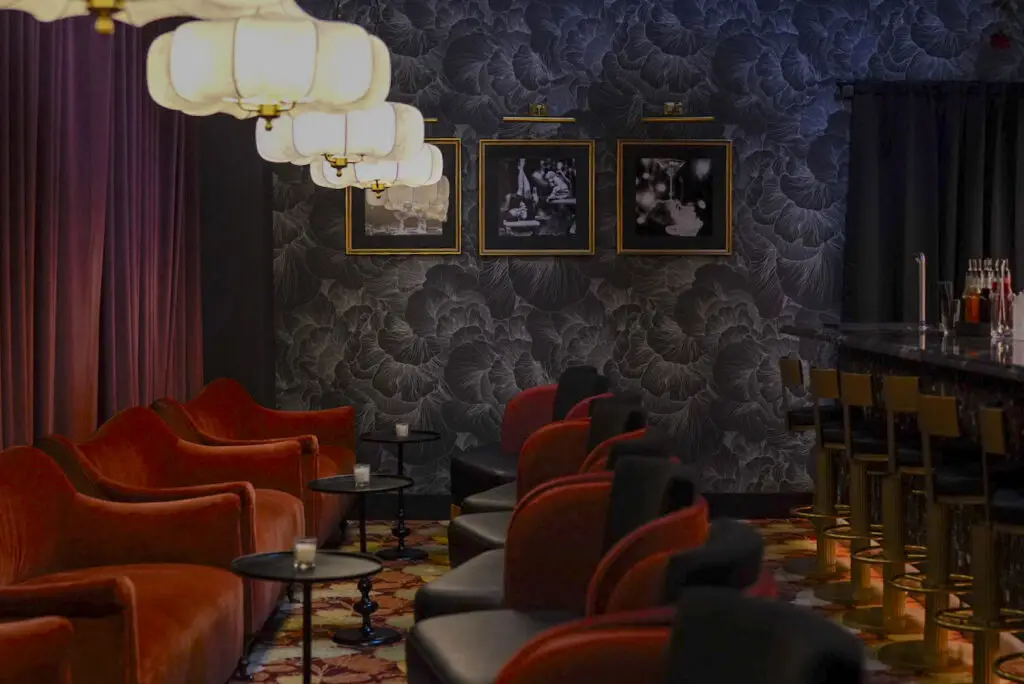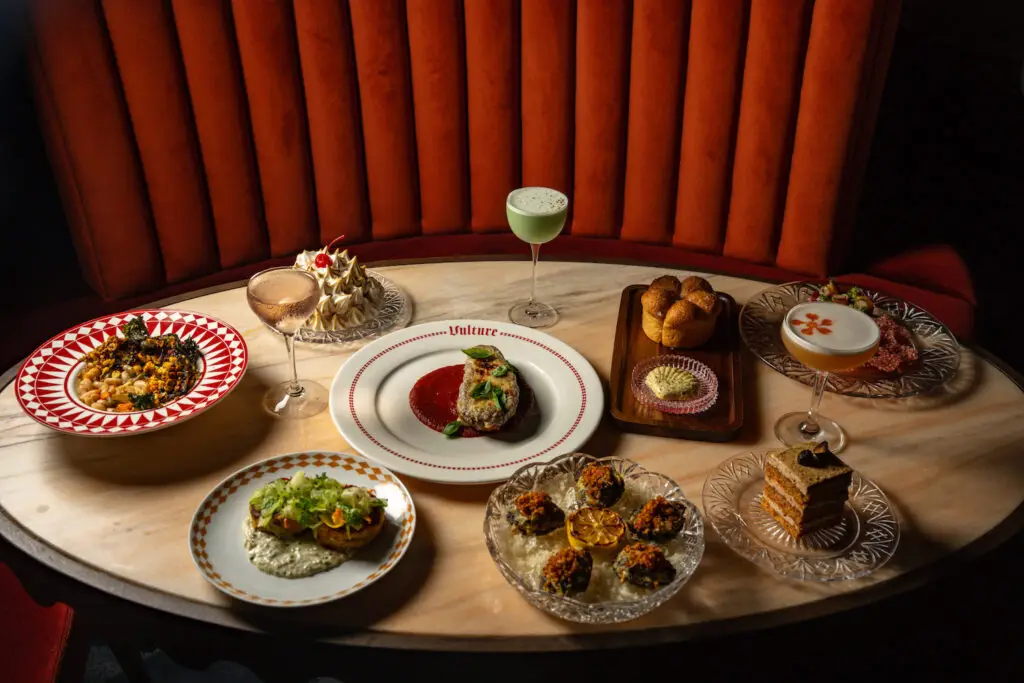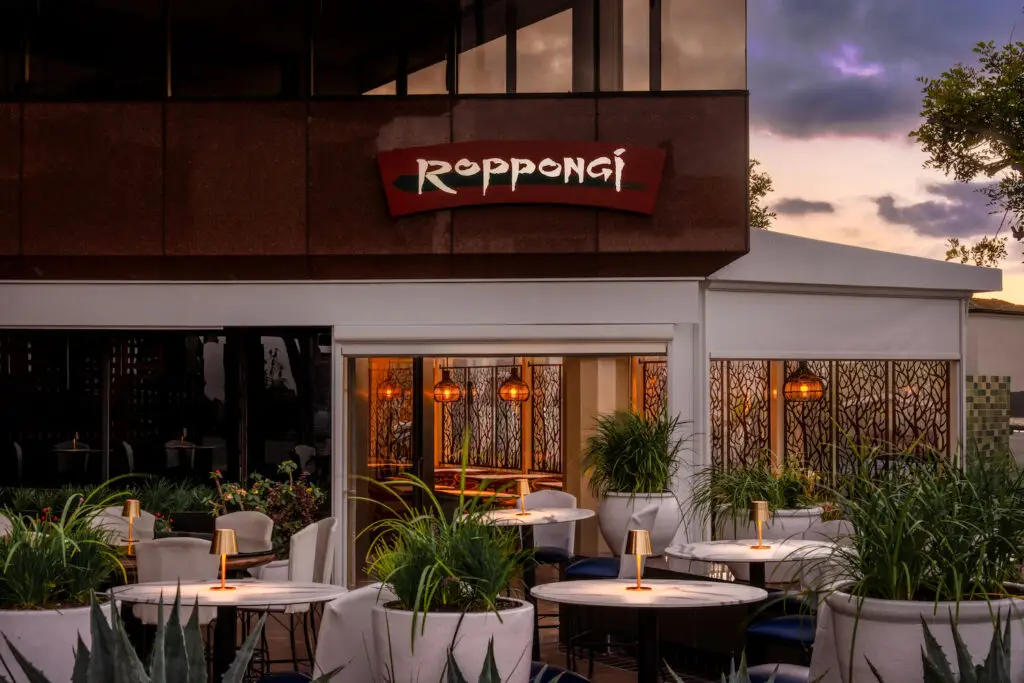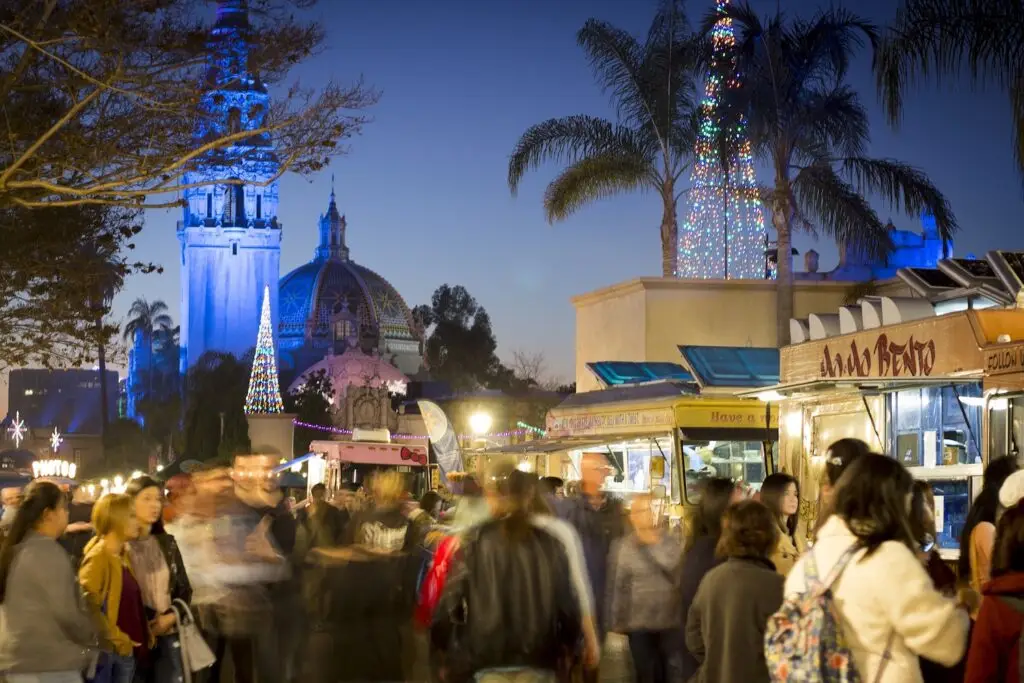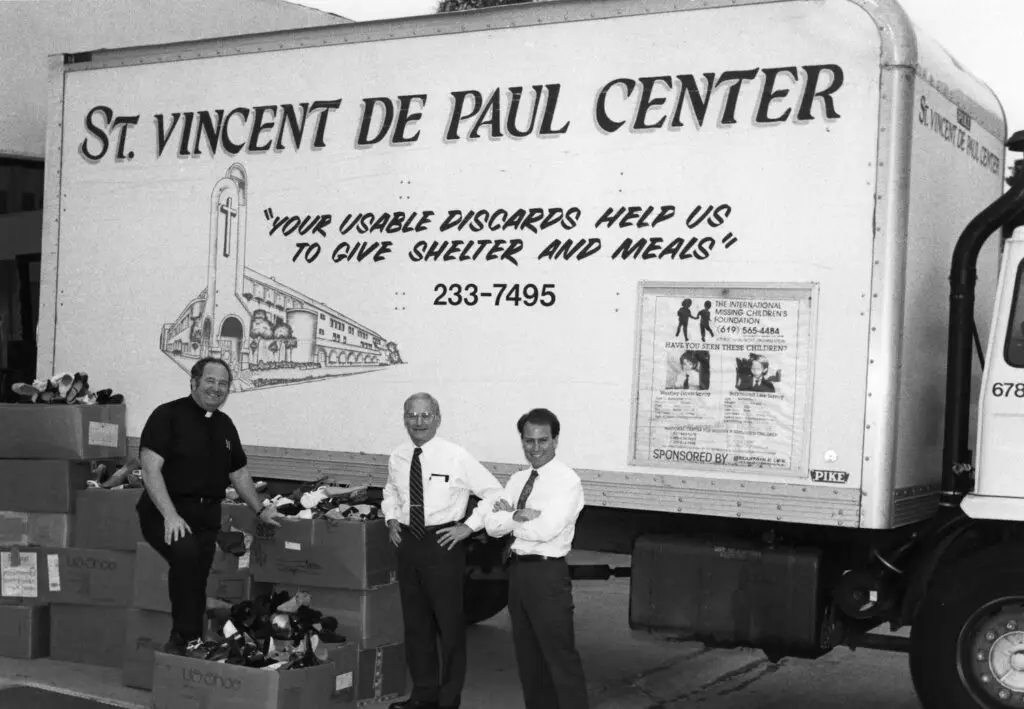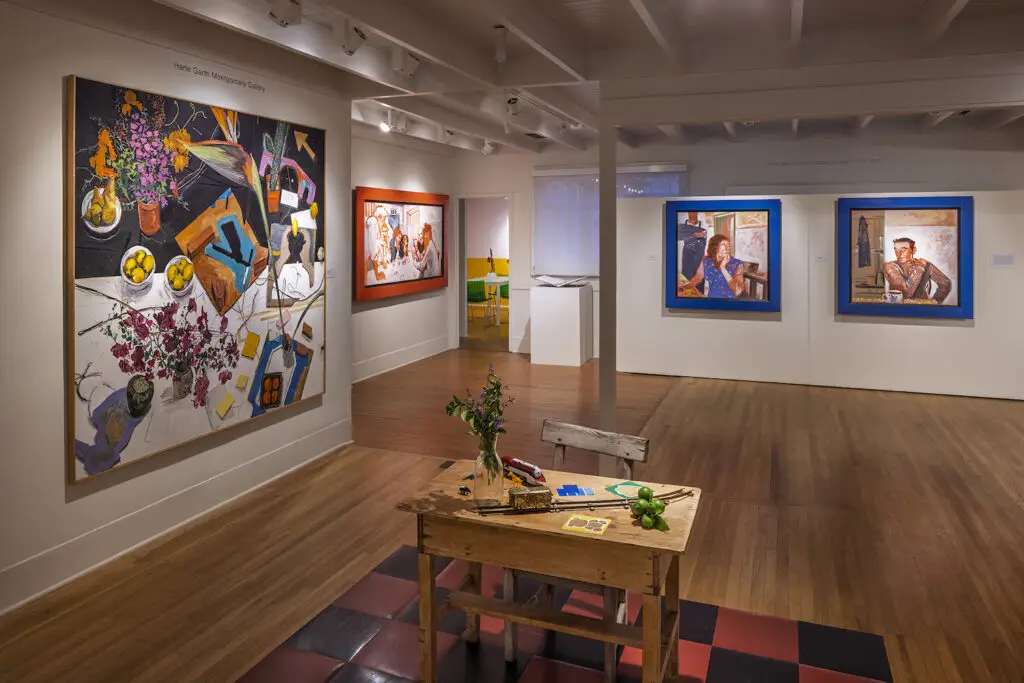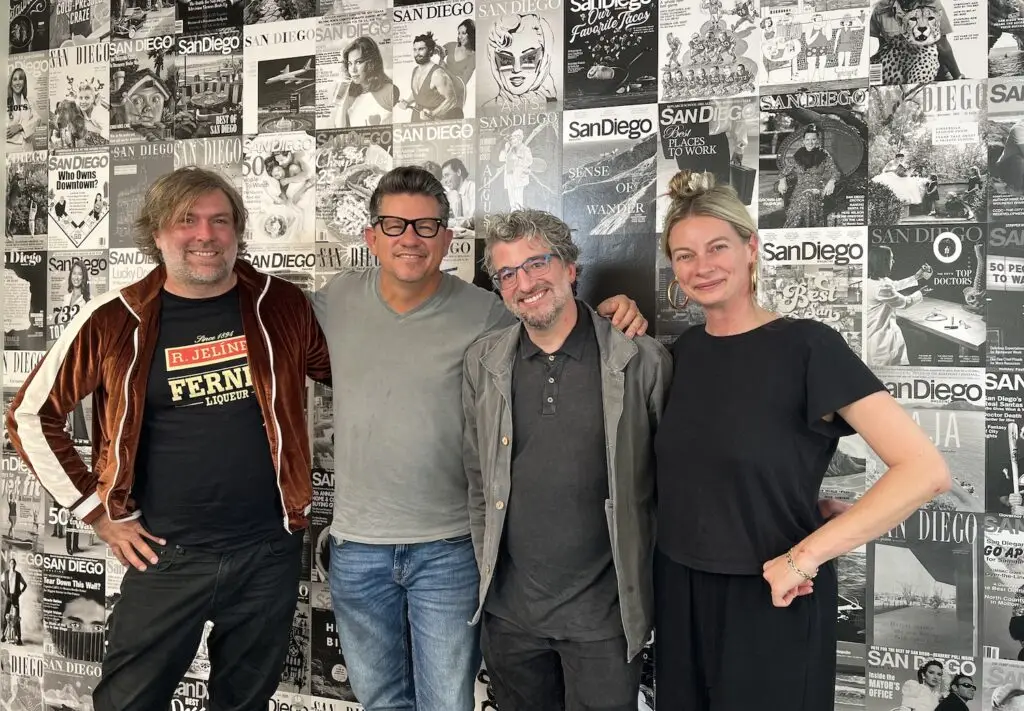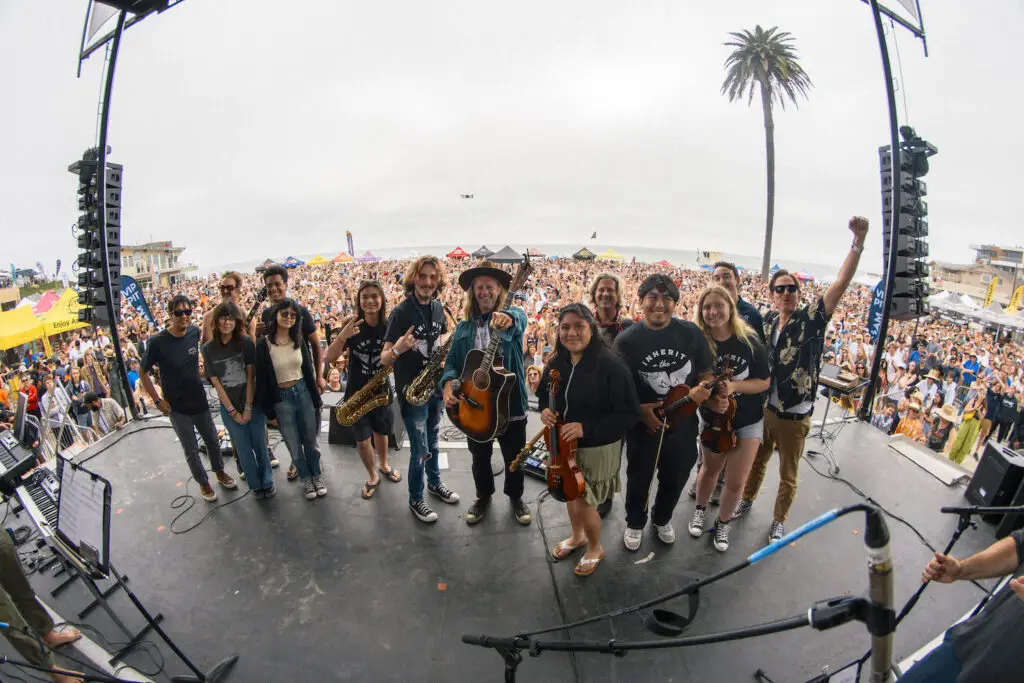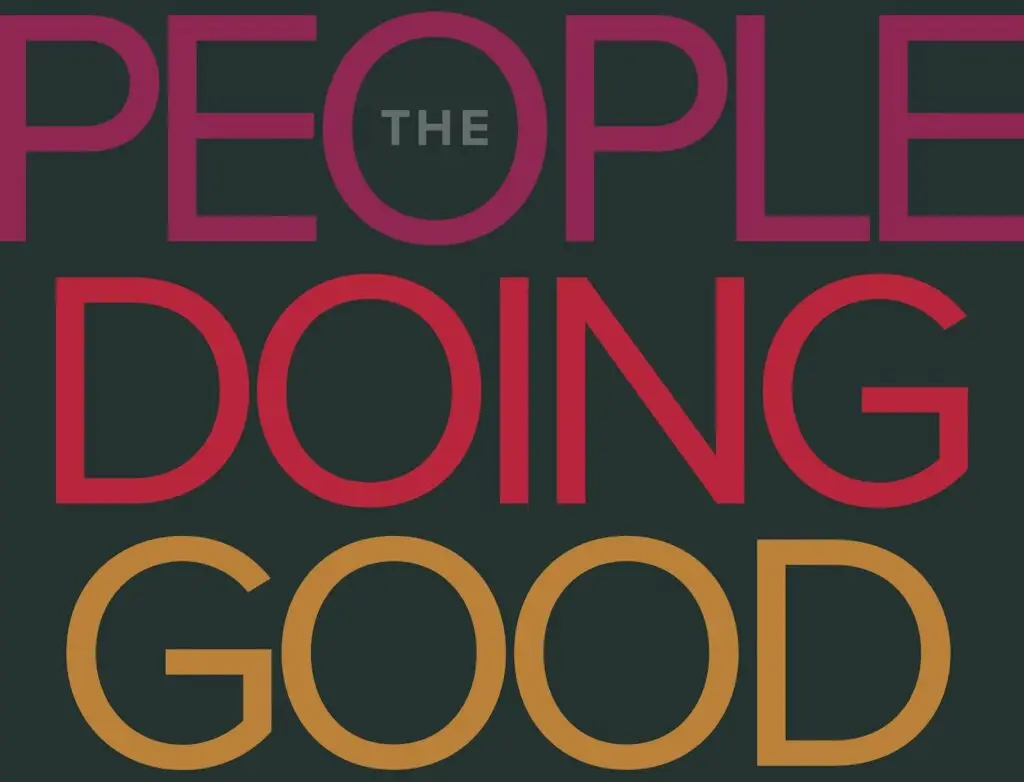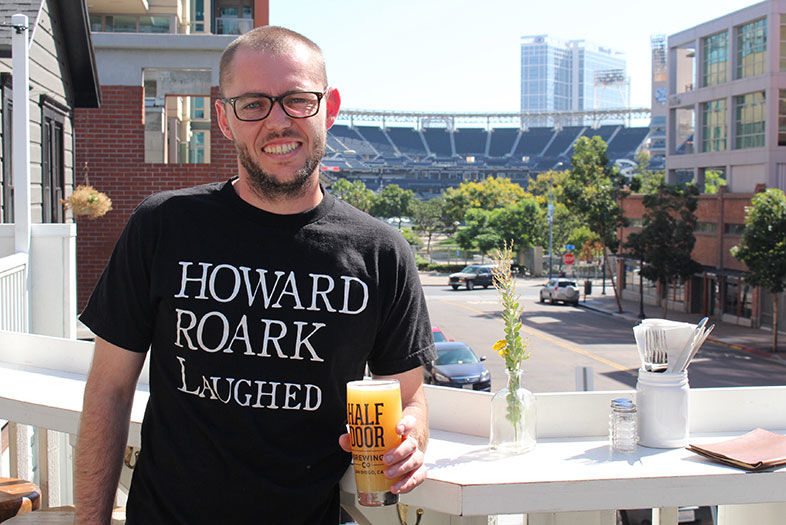When Half Door Brewing Company opened nearly two years ago, the place was a breath of fresh air. Not only was it enhancing the downtown brewing scene, it was housed in an old residence—at the corner of Island and Ninth—just a ball’s throw from Petco Park. The setting, which recalls an old Southern-style plantation home with its white clapboards and its long, wide, covered porch, is unique to breweries in San Diego. It provides a welcome change from the ubiquitous industrial office park spaces that are home to so many other breweries in town.
The nice thing about Half Door being in an actual house is that it feels comfortable and relaxing to be there. The covered porches (street level and one on the second floor) provide the perfect setting for long, lazy conversations over a pint or two. The breeze wafts in from the street, people stride by on the sidewalk, and you can watch the whole world pass by while you sip.
I took the opportunity to sit down on the front porch with Dan Drayne, brewmaster and head brewer at Half Door, for one of those relaxed, breezy chats. The setting was laid back, but there’s nothing particularly chill about Dan—he’s a captivating bundle of energy and intensity, all laser focused on the one thing he loves best: Making beer.
With a Half Door Pale Ale in one hand and a pre-release taster of a Half Door/Monkey Paw collab Schwarzbier (awesome) in the other, I sipped as Dan spoke about the unique history of the house, why he loves the science of beer and experimentation, and why he never likes to brew the exact same beer twice.
So, have you actually had your second anniversary yet?
No. It’s going to be at the start of February. We opened during the first few days of February.
How does it feel after two years? And how does it feel being in this part of town?
Good. It’s just that moving stuff around is tough. It’s especially tough moving all those kegs around. We tried to sell other people’s beer along with ours for a while, but it really didn’t work. Some of the other beers got a little old and weren’t moving, so we did away with that last summer and focused on our own beer. So now we’ve gotten up to nine of our own beers on tap. And every keg has to go up and down a bunch of stairs.
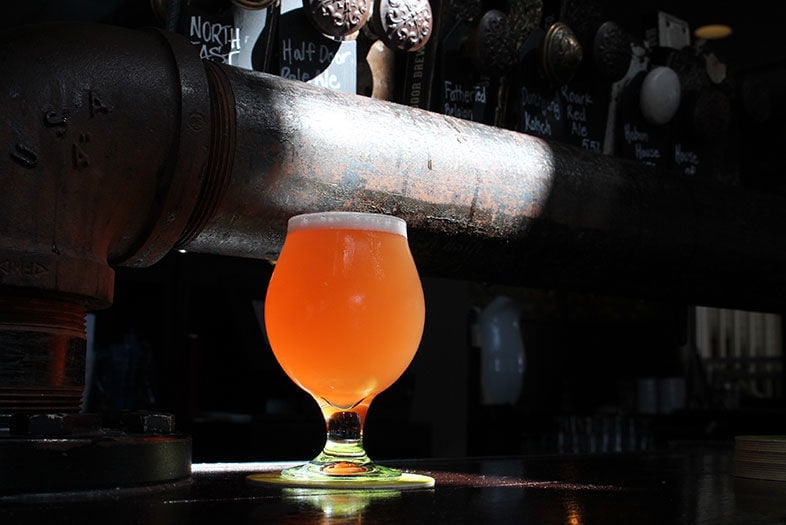
Have a Beer with Half Door Brewmaster Dan Drayne
Half Door Brewing Company’s sour. | Photo: Bruce Glassman
Half Door Brewing Company’s sour. | Photo: Bruce Glassman
Well, it may no be as convenient as some of the places the other guys are in, but the one thing I’ve always said about this location is that it’s a really nice refreshing change from the light industrial spaces. This place has real character.
Yeah, it’s really not bad. It’s just different, and with more manual labor. I brewed for two and half years at Coronado Brewing Company, and in the morning I’d come in, hit a button, and everything would start going. I would go grab coffee during the first stages. But here it’s all manual labor. My diet’s awful, so it keeps me somewhat slim!
Remind me again about the history of this house.
It was a duplex. Two families lived here. The guy that owns the property lived here and then, on the other side, it was rented out. It was a few different things. I think it was actually a weed shop at one point, which is kind of funny.
You came from Coronado, your dad was in the business already, so you weren’t unfamiliar with the whole running of a business like this…
That’s right. My sister Stacy runs all the front of house stuff, she’s the manager. She actually makes the place run.
As far as your learning curve over the past two years, tell me about some of the things you maybe hadn’t anticipated when you first opened.
The biggest issue, and it took me a while to figure out, was water. I knew a little bit about it, but nowhere near enough. Since the drought, the water has changed. At Coronado we did pH in the mash and we also added some pH to the sparge water. Then we just added a little bit of salts here and there to the kettle, and everything was fine, especially for IPAs. But here we got a lot of sodium and a lot of chloride, which is not good, especially for pale beers. So I got an RO [reverse osmosis] system and started playing with that. It took a while to dial it in, but now we have it working pretty well. I make a lot of pretty pale beers—a lot of them are just pilsner malt and wheat and that’s my recipe—you don’t want bitterness, you want a soft mouthfeel and you want them to be really easy to drink. So that was the big learning curve there.
I remember when you first opened, you said you weren’t going to make the same beer twice. But you can’t not make certain beers that everybody loves and wants to drink, right? So how did you reconcile that?
Well, yes, the beer is often the same idea as before, but it’s also different every time and the process may be tweaked. For example, this beer, House of Hops IPA—it’s a Northeast style IPA, like a lot of our IPAs right now—and to do them, I try different water profiles and techniques with dry-hopping, stuff like that.
So they are really all different.
Correct. For this beer, I wanted to increase the longevity of it and clear it up, so instead of just using one yeast strain we used two. The first strain made the beer clearer, and the second got a nice fruitiness from the hops. We experimented with the proportions of the two strains and I learned a lot. I’m very big on science.
Do you ever worry that you’re going to mess with a beer that everyone really loves and they won’t like it as much?
Mostly I mess around with the IPAs and sours a lot. Most of our regulars are pretty cool with that. Like I said, most of the beers are generally the same idea, it’s just that I’m trying to get the process more efficient or I’m trying to accentuate this flavor or that flavor… But the regulars, they don’t mind. I mean, we changed from clear beers to hazy beers and we really didn’t notice much feedback. The feedback we did get was more positive than negative.
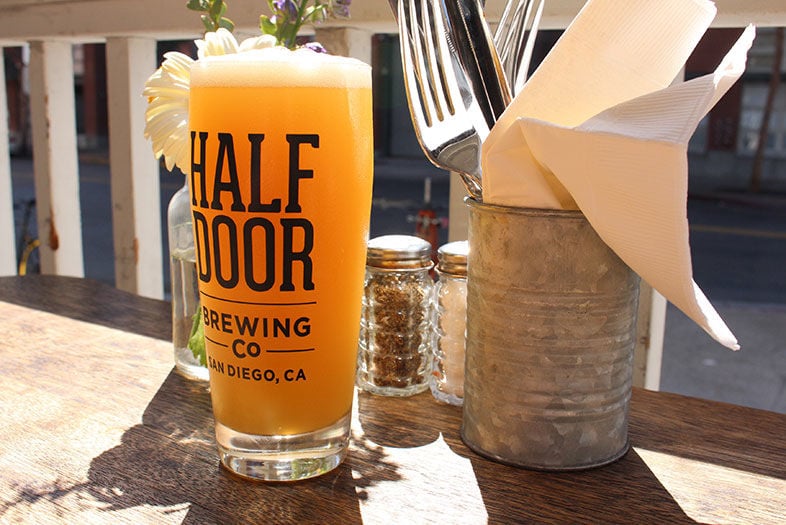
Have a Beer with Half Door Brewmaster Dan Drayne
A Half Door hazy IPA. | Photo: Bruce Glassman
A Half Door hazy IPA. | Photo: Bruce Glassman
Why did you decide to go hazy?
Just to try something new.
Is it just about not filtering?
It’s also the way you do the yeast and the technique on dry hopping. We changed the house yeast strain (not with the stout or the red) and I think it’s working much better. I read about these techniques and I wanted to try them. The first one we made was a collaboration with Cosimo at Monkey Paw for Beer Week last year called Diabolic. And ever since then, I‘ve been making them. First we only had one or two hazy beers on tap, but now all of them are like that because we got such good feedback.
Do the hazy beers—and the yeast strains you use—do they produce better perceived mouthfeel? Is that the main advantage?
It’s more than just one thing. Yes, the yeast will make a difference, but it’s also the yeast, protein, and hop interaction. My hazy beers actually get clear before I dry hop, but then the dry hopping makes them hazy again.
Are hazy beers catching on in San Diego?
Oh, yeah. Monkey Paw is making them, Abnormal is making some, Coronado is making some, Belching Beaver is making some. So, now it’s getting to be more all over town. In six months, everyone will have hazy beers.
You like to experiment a lot, which means successes as well as failures. What have been some of your most memorable failures?
We tried to do a Flanders Red with Kombucha. We were making Kombucha here and it was pretty solid. I thought we could make a fast Flanders Red, get it to sour pretty fast, and then stop it. I let it sit for like a month, but it’s not going to turn. It didn’t sour. It didn’t get acidic. It just fermented out. And there’s no funk. It’s just a really boring beer. I don’t really like it, and I’m not going to serve it if I don’t like it. I think it was a cool experiment to try, but it was a complete failure.
Are there elements of your experience coming up in the San Diego beer world that particularly influenced how you think about beer?
Working with Scot Blair and Cosimo [Sorrentino] was pretty awesome. I worked at The Field downtown and then I went to Monkey Paw when it first opened. That’s where I learned how to talk to people about beer. And I learned how people feel about beer. Before that, I only knew what I liked, but working at a beer bar, you learn how the customer thinks about beer. And I think that’s a big part of making beer, because I still have to sell it—but I also have to love it. Before, my knowledge and experience was very technical, and then—working there—it opened my eyes about how my palate works.
What’s the most surprising reaction you’ve gotten from customers about a beer?
I think it was making the hazy beers. I mean, even my dad wasn’t on board at first. We were sitting at the bar one day and I told him, “Don’t worry about the look. There’s this beer [the clear beer] and there’s this beer [the hazy beer]. Which one would you rather drink right now?” And he pointed to the hazy one. If I can sell my dad on something like that, I know I’m doing something right!
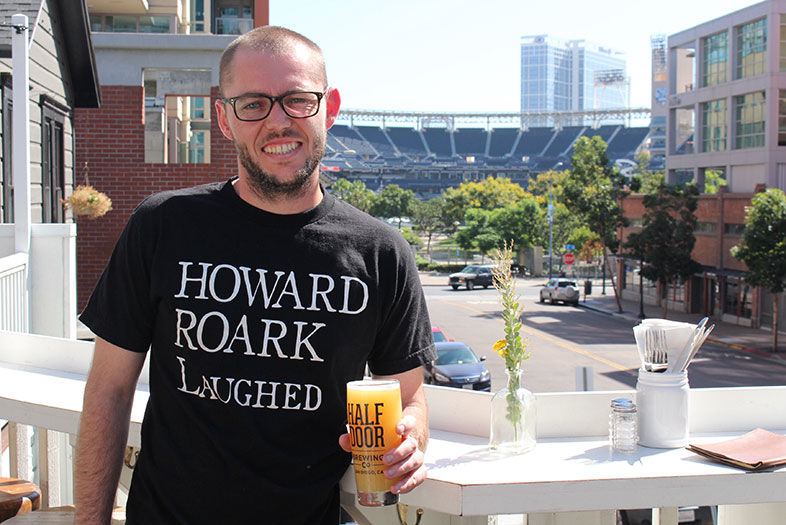
Have a Beer with Half Door Brewmaster Dan Drayne
PARTNER CONTENT
Dan Drayne is the brewmaster and head brewer at Half Door Brewing Company. | Photo: Bruce Glassman
